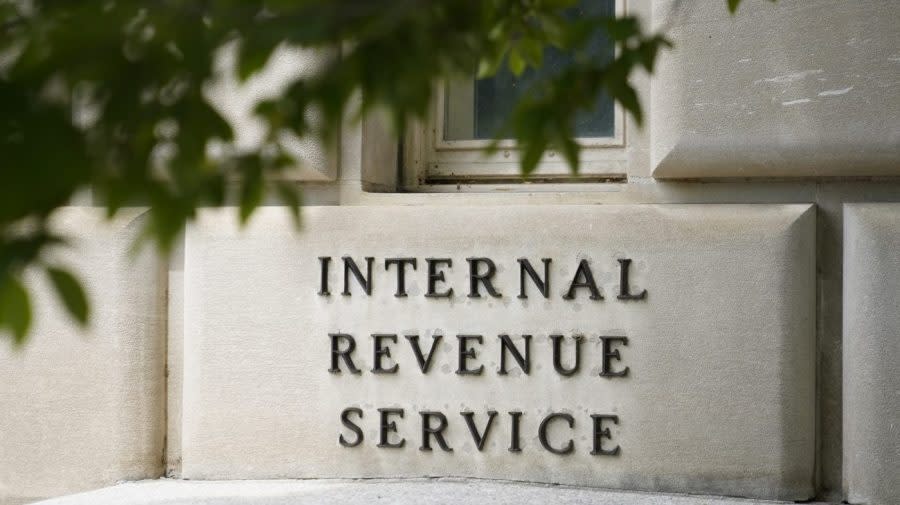IRS gears up to go after ‘complex partnerships’ despite lack of clear definition

The IRS is getting ready to go after what it calls “large, complex partnerships” as part of its push to pursue wealthy tax cheats with tens of billions of dollars in additional funding.
The IRS plans to double audit coverage for partnerships with $10 million or more in assets by fiscal 2025 over fiscal 2021 levels.
But new research from the government’s internal watchdog finds that the specific types of legal and commercial structures the IRS is targeting need to be more clearly defined to recoup the uncollected funds.
“IRS has not defined or developed guidance on what a large, complex partnership is or developed measures to ensure additional audits focus on such partnerships,” the Government Accountability Office (GAO) wrote in a report released Thursday.
Pinning down partnerships
Partnerships don’t pay taxes directly but pass their tax liability onto their owners through an IRS form K-1. They can be nested within other partnerships in networked or circular structures, so complex they can resemble a tangle of spiderwebs or pieces of Byzantine jewelry.
This makes it difficult to audit them, as evidenced by atrophying audit rates.
Here’s what a free IRS e-filing tax return system could look like
“The lack of a definition presents a challenge as IRS seeks to increase its audit coverage of partnerships,” the report read.
In a response to the criticism, the IRS acknowledged the haziness in the definition and said it’s working to be more precise.
“We plan to perform additional research and analysis to better understand the characteristics and define partnership segments,” Douglas O’Donnell, the deputy commissioner for services and enforcement at the IRS, wrote in a letter to the GAO earlier this month.
IRS Commissioner Danny Werfel said earlier this month on a call with reporters that the public should expect more updates on how exactly the IRS is going after big partnerships soon.
“We’re … focused on increasing our exam coverage for complex partnerships,” Werfel said. “In our upcoming next briefing, we’ll provide more details on that.”
“I’m looking forward to future updates,” he said.
Partnership boom expands the tax gap
The GAO analysis found only 54 large partnerships out of more than 20,000 got audited in 2019, for a rate of 0.27 percent.
That is just a hair shy of the audit rate for people who make $25,000 per year or less. In 2007, the audit rate for large partnerships was more than quadruple that.
Tax gap rises as IRS finds amount of unpaid taxes is increasing
Partnerships have also exploded in recent years as a commercial designation within the economy.
In 2002, there were about 3,000 partnerships worth more than $100 million in the U.S. In 2019, there were more than six times that amount.
The number of partnerships worth between $1 billion and $5 billion has increased more than tenfold during that period, and the number of partnerships worth more than $5 billion has increased more than eightfold.
Unreported business income on individual income tax — precisely the type of income that pass-through entities like partnerships allow — is one of the largest segments of the “tax gap,” the amount the government is owed in taxes each year but fails to collect.
The IRS estimated the tax gap for personal business income to be $130 billion annually for tax years 2014 to 2016, which was the last time the tax gap was formally measured, but it is likely much higher than that now.
The gross tax gap was about $500 billion in those years, but last year former IRS commissioner Charles Rettig said it could be as much as $1 trillion.
A two-tiered tax system
Tax experts have long looked askance at partnerships as a potential tax dodge.
“The IRS does not treat K-1 income the same way that it does reports of people’s wages filed on W-2 forms or the reports of income from dividends, interest, royalties and contract jobs reported on Form 1099,” veteran tax reporter David Cay Johnston wrote in a 2003 book on the U.S. tax system.
Black Americans likely audited at higher rates, IRS says
“IRS computers match every wage, dividend, interest, royalty and contract job report to what is listed on individual tax returns to make sure that every dollar earned in these ways is taxed. Not so partnership and K-1 reports,” he wrote.
The differential administrative treatment of partnership income is symptomatic of what Treasury Secretary Janet Yellen has described as the “two-tiered tax system” in the U.S.
“At the core of the problem is a discrepancy in the ways types of income are reported to the IRS: opaque income sources frequently avoid scrutiny while wages and federal benefits are typically subject to nearly full compliance,” she said in a 2021 statement on Congressional tax proposals.
For the latest news, weather, sports, and streaming video, head to The Hill.

